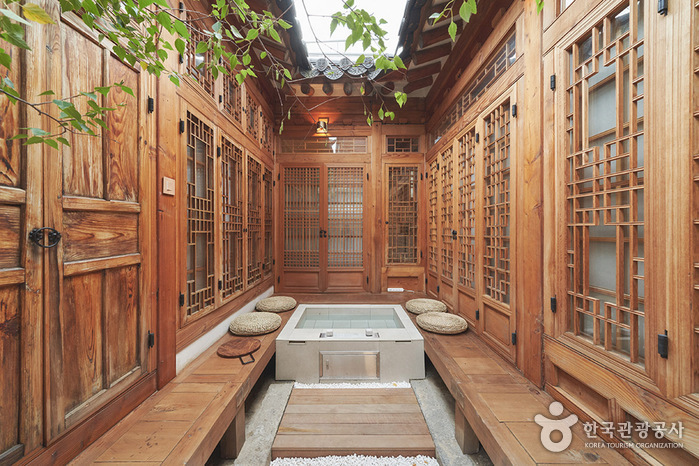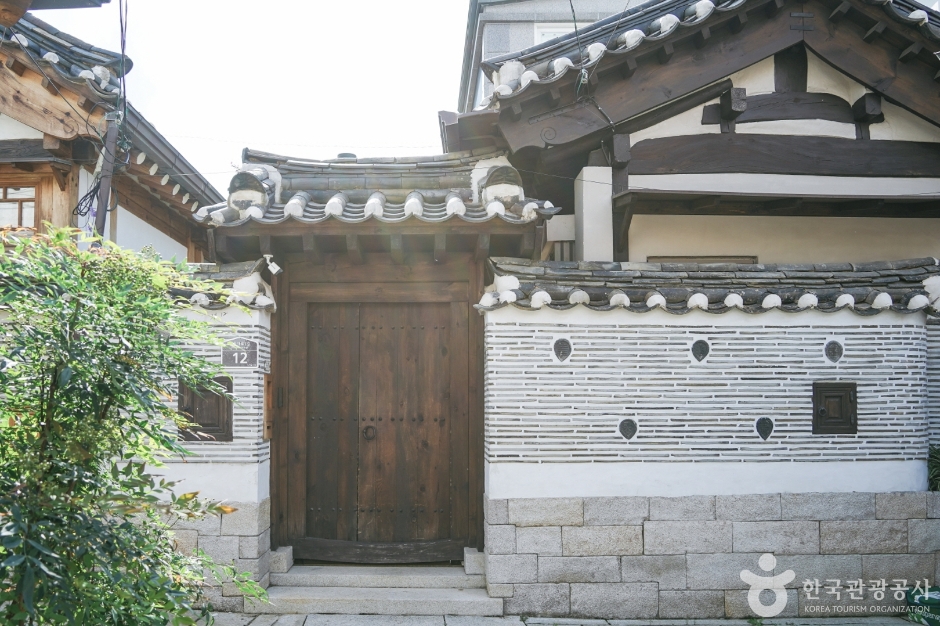Seoul Plaza (서울광장)
3.0Km 2024-06-19
110 Sejong-daero, Jung-gu, Seoul
+82-2-2133-5640
Seoul Plaza in front of Seoul City Hall is a historic site where the March 1, 1919 (Samil) Independence Movement and the pro-democracy movement in June 1987 were held. It is also a well-known place where tens of thousands of Korean soccer fans gathered together to watch the 2002 World Cup Games. Being located within the center of the city and surrounded by many historic attractions, including Deoksugung Palace, Seoul Plaza has become a representative attraction of Seoul.
Of one book and stay (일독일박)
3.0Km 2024-12-23
11-1 , Pirundae-ro 3-gil, Jongno-gu, Seoul
+82-504-0904-2340
Ildogilbak in Seochon Village, Seoul, is a private hanok stay that has been stylishly renovated with modern facilities. The bedroom, kitchen and dining room are located around the courtyard. Tired travellers can soak their feet in the small courtyard footbath while sitting on the veranda. There’s a queen size bed in the bedroom, and a large table in the dining room where you can read a book and chat. There is also an attic space where you can fall asleep looking at the stars through a small skylight. The kitchen is well equipped, and there’s a tub in the bathroom.
Hanok Essay Seochon (한옥에세이 서촌)
3.0Km 2024-06-04
12 Pirundae-ro 3-gil, Jongno-gu, Seoul
The area of Seochon features both traditional elements as well modern, showing the changes over time. A stay in one of the hanok houses here is the perfect way to feel this unique ambiance. Hanok Essay Seochon provides this experience, open to visitors of all ages.
CheongKwanJang - Hongje Branch [Tax Refund Shop] (정관장 홍제)
3.0Km 2024-04-16
1F, 405, Tongil-ro, Seodaemun-gu, Seoul
-
ABC-Mart - Mecenatpolis Branch [Tax Refund Shop] (ABC마트 메세나폴리스)
3.0Km 2024-04-22
Store# B123, Store# B124,, 45, Yanghwa-ro, Mapo-gu, Seoul
-
Ziozia - Mecenatpolis Branch [Tax Refund Shop] (지오지아 메세나폴리스)
3.0Km 2024-04-19
1F, 45, Yanghwa-ro, Mapo-gu, Seoul
-
Homeplus - Hapjeong Branch [Tax Refund Shop] (홈플러스 합정)
3.0Km 2024-04-18
B2F, 45, Yanghwa-ro, Mapo-gu, Seoul
-
Muji - Mecenatpolis Branch [Tax Refund Shop] (MUJI 메세나폴리스)
3.0Km 2024-04-17
1F, 45, Yanghwa-ro, Mapo-gu, Seoul
-
Topten - Mecenatpolis Branch [Tax Refund Shop] (탑텐 합정메세나폴리스)
3.0Km 2024-04-23
5, Seolleung-ro 162-gil, Gangnam-gu, Seoul
-



![CheongKwanJang - Hongje Branch [Tax Refund Shop] (정관장 홍제)](http://tong.visitkorea.or.kr/cms/resource/34/2889534_image2_1.jpg)
![Stco [Tax Refund Shop] (STCO)](http://tong.visitkorea.or.kr/cms/resource/56/2891056_image2_1.jpg)
![ABC-Mart - Mecenatpolis Branch [Tax Refund Shop] (ABC마트 메세나폴리스)](http://tong.visitkorea.or.kr/cms/resource/16/2878316_image2_1.jpg)
![Ziozia - Mecenatpolis Branch [Tax Refund Shop] (지오지아 메세나폴리스)](http://tong.visitkorea.or.kr/cms/resource/80/2887980_image2_1.jpg)
![Homeplus - Hapjeong Branch [Tax Refund Shop] (홈플러스 합정)](http://tong.visitkorea.or.kr/cms/resource/73/2889573_image2_1.jpg)
![Muji - Mecenatpolis Branch [Tax Refund Shop] (MUJI 메세나폴리스)](http://tong.visitkorea.or.kr/cms/resource/32/2888032_image2_1.jpg)
![Topten - Mecenatpolis Branch [Tax Refund Shop] (탑텐 합정메세나폴리스)](http://tong.visitkorea.or.kr/cms/resource/94/2888194_image2_1.jpg)
 English
English
 한국어
한국어 日本語
日本語 中文(简体)
中文(简体) Deutsch
Deutsch Français
Français Español
Español Русский
Русский